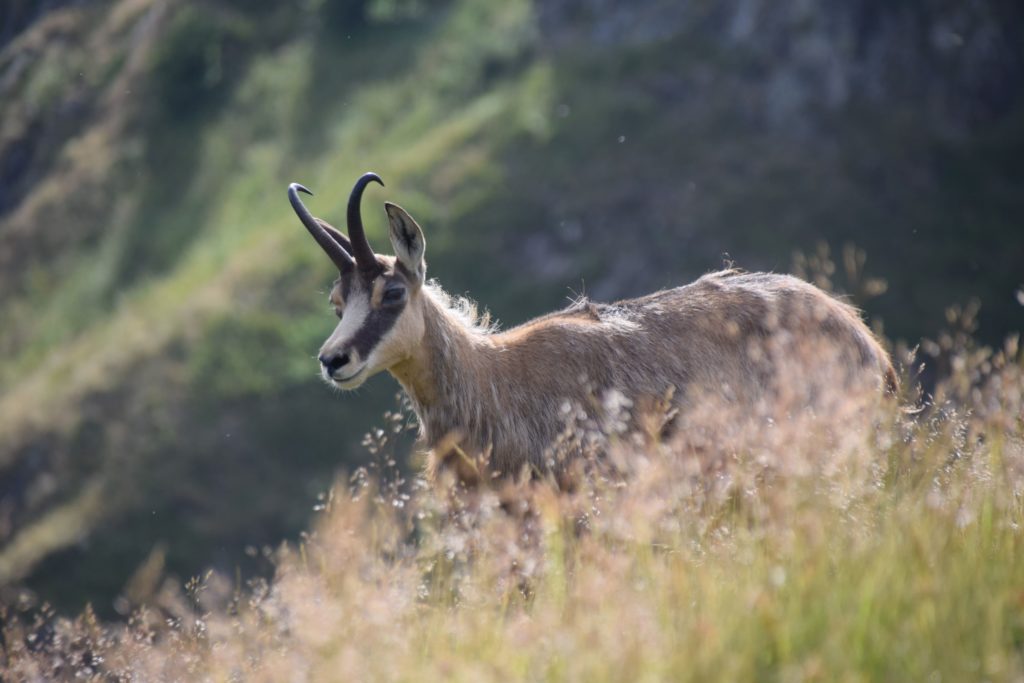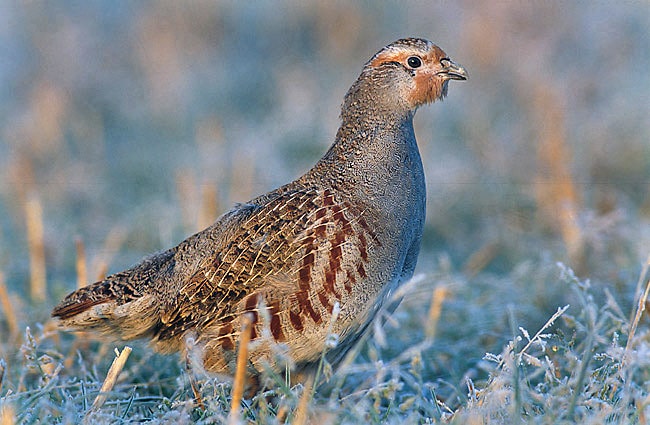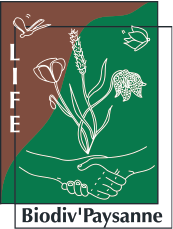Taking biodiversity into account at the municipal level, by Marc San Francisco, Mayor of La Fajolle
Cover picture : Municipal Council of La Fajolle ©La Fajolle
In July 2022, we had the chance to visit La Fajolle, located in the Audoises Pyrenees (11), to talk to Mr. Marc San Francisco, Mayor of the village. He explains his perception of nature and the actions implemented to preserve it.
Good reading !
Can you introduce yourself ?
I am Marc San Francisco, mayor of the village of La Fajolle, located in the Department of Aude. Before becoming mayor, I was a nurse at the Carcassonne hospital. But since 2007, with my wife, we are permanently living in the village. Our wish was to retire here since my wife’s father was adopted in the village of Roquefeuil next door, and she wanted to get back to her roots.
I always had very good relations with the former mayor since I was elected deputy alongside him. After his term, he handed over to me to become the mayor. I am currently in my second term.
Can you introduce your village ?
La Fajolle is a village of 13 inhabitants residing all year round and over 150 inhabitants during the summer period. The main activity is livestock farming with a herd of cow-goats and fish farming. We also do very limited green tourism with two lodges.
Where does your sensitivity for nature come from ?
I have always been sensitive to nature, but more about questions of fishing, hunting and mushroom picking. Much less on the protection of biodiversity. This sensitivity came from my wife’s commitment, who was much more sensitive to these questions.
What are the actions ?
The first action was to stop the herbicides used on the two alleys of the village. Indeed, they dramatically polluted the passing river, Le Rebenty. The chemicals used were washed away by rainwater and were flowing into the river. To overcome both the use of herbicides and weeds, Françoise, my wife, offered to plant flowers along the village roads and houses instead.
The second action was driven by the inhabitants of the village, because of the agricultural abandonment of the lands and the closing of the natural areas. They said “We have to do something, we’re going to be eaten by the hazel trees”. Indeed, this abandonment of the land by the farmers had favored the growth of trees which regained their right to the grasslands. To meet the needs of the inhabitants, we had a first contact with Vincent Dumeunier from the ENS department (Sensitive Natural Areas of the Department of Aude). Vincent directed us to the Conservatoire d’Espaces Naturels d’Occitanie and it all started with Mr. Romain Bouteloup, who came to visit us several times to set up an action plan. Thanks to the implantation of the village in a Natura 2000 zone and the support of Vincent Dumeunier, funding from Natura 2000 and the Department of Aude enabled us to start this huge work with the cutting of hazel trees to reopen the natural area and the building of fence to allow our farmer to settle down. In addition, we have signed an agreement with CEN Occitanie for the association to be responsible for monitoring and organizing the reopening of natural areas thanks to its internal skills.
Finally, we installed mains drainage and a wastewater treatment plant to preserve our nature because at that time, everyone threw hygienic jumps into the river.
What are the reactions of the residents ?
Overall good. We have a municipal council committed to the protection of nature, which unanimously votes on projects in favor of biodiversity. As elected officials, we respond to the request of the inhabitants which was the reopening of natural environments and the installation of a farmer, already living in the village. This reopening action has allowed him to build his sheepfold and increase the size of his livestock since he now has more land for grazing.
What is the desire to pay attention to nature ?
The idea is to leave to future generations a landscape and a natural environment as clean as we found them, or even better. There are emblematic species on our territory such as the Capercaillie and the Gray Partridge. We do what we can on our scale. We open doors, we make things easier.
Was there any reluctance to these actions ?
As things progress, the Municipal Council and the inhabitants realize that everything is going well, that the environmental protection structures don’t want to get the land for themselves and, on the contrary, integrate the human activities in the protection of nature. There is therefore a balance to be found between biodiversity and human activities. Everyone is a winner : as said just before, the farmer was able to make his sheepfold, he has more land because the natural area is reopened and the species that couldn’t live because of the hazel trees are back.
What are the advantages of preserving the biodiversity of your municipality ?
First of all, it gives a much more pleasant living environment. We are “Village Fleuri” (Flowered Village) and apply for the second flower. We are also “Sane Earth”. Locals are increasingly out and tourists stop to take pictures. We also have a website (http://lafajolle.fr/), run by Jacqueline Castel, my assistant. The photos posted online show the evolution of the flowers of the village but also of the landscapes and the wildlife according to the seasons. Then, we have an exceptional natural heritage and it is our duty to preserve it for the following.
Do you have other projects ?
Yes, we have signed with the CEN Occitanie, once again, an amendment to the agreement that all the plots of the municipality, except subject to the management plan ONF (Office National des Forêts), are managed over a period of 20 years. We are still working with Vincent Dumeunier, who was very important for the connection with CEN Occitanie, and who is always a vital help for the follow-up and the assembly of projects, such as the creation of the National Reserve of 1000 hectares (in partnership with CEN Occitanie, the Aude Claire Federation and the Department of Aude). On 2022, July 22, the Department of Aude should issue a decree classifying the village as a ZPENS (preemption zone for sensitive natural areas). The municipality will thus be able to pre-empt the sale of certain sensitive plots and thus have control of the land.
Your municipality is included in the LIFE Biodiv’Paysanne project, what does it bring you ?
This project provides us with funding to continue our work to reopen natural environments and preserve biodiversity. It is a real help that allows us to continue working with the current structures.
What is the interest of preserving biodiversity at the municipal level ?
There are challenges for each municipality since the biodiversity is different. It is a duty for future generations. It is obviously necessary to take into account all the economic, sociological, tourist, etc. aspects and to associate them. Here, at La Fajolle, we combine all these aspects : we preserve hunting and pastoralism, while having practices more respectful of the environment. You always have to ask yourself the question : am I preserving the balance of this species or this environment, or am I hitting the interest or the capital ? It is important to find the balance that allows human activities to continue without altering our biodiversity capital. It is because we did not do anything for years that we find ourselves in the current situations.
What can we do to reduce the impact of climate change? On our scale, we each have to do a little bit. Elected officials can focus on this approach at their municipal level. For us, it is necessary to be accompanied by CEN Occitanie because they have the skills. We work in complementarity. We must bury the great taboo that if we protect, we could no longer do anything, we will no longer be able to pick mushrooms for example. Things can be done in a reasoned balance. It’s a win-win situation. Moreover, it is important to educate people about the prohibitions. Prohibition itself is meaningless if we don’t know why we are prohibiting. If we say: you should not go in this area at this time because the Capercaillie sings and humans can disturb it, you have to explain and educate people.
People are very much in love with their territory and this affects their commitment in the preservation of biodiversity. We erected a pillar at the entrance to the village, which comes from the old cemetery : the text writes the foundations of how we perceive ourselves in our territory. In addition, the inhabitants trust the Municipal Council, it is a locomotive. We must focus on the issues that interest them, people must find their interest in the nature protection.
Finally, can you tell us your favorite place and species?
The Forest of Remembrance. We are in the process of creating, in partnership with the ONF and at the Col du Pradel, a symbolic high place for the inhabitants, a forest of 25 numbered trees. These trees can be chosen by the people where they can scatter their ashes. A small funeral plaque around the tree will be placed for everyone’s remembrance.
If I had to name just one species, it would be the isard (chamois). But I also like the capercaillie and the gray partridge.



Interviewed : Marc SAN FRANCISCO
Interviewer & writer : Mathilde CASSE














